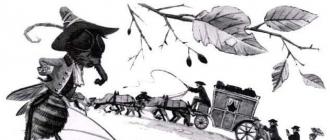Belarusian national cuisine has existed for many centuries. It’s influenced by , geographical location, and climate. Agriculture causes using a lot of vegetables in cooking national dishes. Mostly, it was local food that was used in Belarusian cookery but there is a little influence fr om migrants fr om the bordering territories.
History of Belarusian cuisine
Recipes of other nations (Baltic, Jewish, German) appeared in Belarusian cuisine since existing of the Grand Duchy of Lithuania. For many centuries Belarusians didn’t consume a lot of meat but they ate lard as the Ukrainians did. It was pickled with its skin. As a substitute for meat there were mushrooms however at that time they were not pickled but dried.

Diary and sweet were almost not consumed in Belarusian cuisine. But there were sweet drinks such as kissel or shortening for a dessert.
Later on Belarusians used more meat in their ration. Usually meat dishes were cooked on holidays. The most popular kinds were pork, beef, poultry and game. Since that time there have been such dishes as machanka, verashchaka, smajanka, home sausages and pickled lard.

River fish was also widely used in national recipes. The most popular species were pike, sturgeon, blackhead, carp, perch, and zander. Soup and dumplings were prepared fr om fish.
Country cuisine was nutritious, simple and fresh. A lot of dishes were served to table being hot. Dishes for princes and gentry were more various and exotic. There were stuffed sanders and delicacy on magnates’ tables.
In Soviet Union times Belarusian cuisine was influenced by other nations. Ukrainian and Caucasian food was served in public places.
In the 20 th century a lot of Belarusian dishes were fr om wheat flour but not from rye as it was earlier. There were also a lot of salads.

Modern Belarusian cuisine
Nowadays it’s hard to use the same products as our ancestors did. Some vegetables and beans disappeared from our table. But many dishes have existed so far: pancakes, dumplings, pickles, kvass and beet soups, home sausages, lard, meat dishes.
Potato is an ingredient that exists in many Belarusian dishes. An average Belarusian eats a half of a kilo of potato every day. There are a lot of potato recipes such as draniki, baked puddings, babka, fried and stewed potato.
In Belarus meat is eaten twice as less than in Poland. By the way the most popular meat is not very useful but tasty pork.

The most popular meat dishes:
- bigos – stewed cabbage with meat;
- kolduny – potato fritters with meat;
- machanka – a sauce from different sorts of meat, served with pancakes;
- smajanka – meat pie.

As for alcohol drinks there are nastoykas from vodka, cranberry, honey such as zubrovka, crambambulya. Kvass and birch sap is also popular.
Deserts
Honey has been popular throughout all the history. Belarussians like pancakes with honey, honey cereals and pies. Soloduha (a sort of pastry), kissel, baked apples were cooked with honey.
Praniki is a sweet flour dish that was originally called “perniki”. People believe that it took its name from pagan times when people worshipped many gods and one of them was Perun, god of the Sun. At that time people brought something to Gods and especially figures of animals from sweet and tasty pastry. Later on the name changed as well as its taste because now they are made from wheat flour but not from rye.

Pancakes
Scientists still argue about the appearance of pancakes. There are several ideas. Some suggest that pancakes were baked from rye kissel. Another believe that the word ‘pancake’ appeared from the word “mlin” (mill). Earlier pancakes were baked from different sorts of flour. Now they are made mostly from wheat flour, yeast, milk, sour cream, kefir. Usually pancakes are eaten with various toppings, jam or honey.

Belarusian restaurants
You can taste national recipes at wh ere you can find a lot foreign guests who came to our country. There you can taste not only country dishes but also meals from princes’ tables.
There are a lot of and wh ere you can taste fresh baked bread, meat sausages, home cheeses, desserts from honey and fruits.
In a menu of Belorusian restaurants one can find not only our national cuisine but European, Caucasian and oriental dishes. Dishes cooked according to old recipes can be tasted during an , which you can book directly on our website.
However tourists should taste specific belarusian meals such as draniki, borshch, machnka, sour cabbage, pickled cucumbers, lard and national nastoykas.
All Belarusians like nutritious and tasty food. You can make sure if drop in one of the local restaurants.
Topic: Traditional Dishes of Russian Cuisine
Тема: Традиционные блюда русской кухни
Russia is the world’s largest country, so if differs greatly from region to region. The same can be said about Russian national cuisine, which is rather varied and based on different cultural and historic traditions. Usually any national cuisine is formed under the influence of two main factors: religion, which prescribes eating certain kinds of food, and climate, which determines availability of various vegetables, fruit, meat and fish products. Orthodoxy, which has traditionally been an official religion in Russia, doesn’t forbid any food. But long fasts prescribing abstinence from meat and other types of animal source food, explain why Russian cuisine includes many vegetarian dishes. And long severe Russian winters help to understand why hot fatty soups and broths are so popular in this country.
Россия – самая большая страна в мире, поэтому разные ее регионы сильно отличаются друг от друга. То же самое можно сказать и о русской национальной кухне, которая очень разнообразна и основана на разных культурных и исторических традициях. Обычно любая национальная кухня формируется под влиянием двух основных факторов: религии, которая предписывает употребление определенных видов пищи и климата, который определяет доступность различных видов овощей, фруктов, мясных и рыбных продуктов. Православие, которое традиционно являлось официальной религией в России, не запрещает никакую еду. Однако долгие посты, предписывающие воздержание от мяса и других продуктов животного происхождения, объясняют, почему русская кухня включает много вегетарианских блюд. А длинные, суровые русские зимы помогают понять, почему горячие, наваристые супы и бульоны так популярны в этой стране.
The most popular Russian soups, which are well-known all over the world, are borshch, shchi, and the cold summer soup okroshka. There are a lot of regional recipes for these dishes, but traditionally, both borshch and shchi are and are served hot with sour-cream and rye bread. Sometimes, for example, during a religious fast, meat can be substituted by fish or mushrooms. Borshch is always cooked with beet-root, which gives it a saturated red colour, and shchi must be based on fresh or sour cabbage. As for okroshka, it is mainly cooked in summer. It is a cold soup, where instead of meat broth kvass is used. It contains cold meat (usually beef), boiled potatoes, boiled eggs, cucumbers and green onion. All the ingredients are chopped and mixed. Okroshka is usually served with sour-cream, mustard and horseradish.
Самые популярные русские супы, которые хорошо известны во всем мире – это борщ, щи и холодный летний суп окрошка. Существует множество региональных рецептов этих блюд, но традиционно и борщ, и щи готовятся на крепком мясном или костном бульоне и подаются горячими со сметаной и ржаным хлебом. Иногда, например, во время религиозного поста, мясо может быть заменено рыбой или грибами. Борщ всегда готовится с добавлением свеклы, которая придает ему насыщенный красный цвет, а в основе щей должна быть свежая или квашеная капуста. Что касается окрошки, то она готовится, в основном, летом. Это холодный суп, где вместо мясного бульона используется квас. Она содержит холодное мясо (обычно говядину), отварной картофель, вареные яйца, огурцы и зеленый лук. Все ингредиенты мелко нарубаются и смешиваются. Окрошка обычно подается со сметаной, горчицей и хреном.
Pelmeni is one more famous Russian dish. Small balls from minced meat are wrapped into dough made of flour and eggs and then boiled in salted water usually with bay leaves. Pelmeni can be served with sour-cream, table vinegar or horseradish. The filling can be made of any sort of meat – pork, beef, lamb or chicken. a mixed minced meat, for example, pork and beef, or pork, beef and lamb. A vegetarian analogue of pelmeni is vareniki, which is more popular in Ukraine. Fillings for vareniki can be made of cottage cheese, mashed potatoes, mushrooms, berries and so on.
Пельмени – еще одно известное русское блюдо. Небольшие шарики из мясного фарша заворачиваются в пресное тесто из муки и яиц, а затем варятся в подсоленной воде, обычно с добавлением лаврового листа. Пельмени могут подаваться со сметаной, столовым уксусом или хреном. Начинку можно приготовить из любого сорта мяса – свинины, говядины, баранины или курицы. Однако самые лучшие пельмени содержат смешанный фарш, например, свинину и говядину или свинину, говядину и баранину. Вегетарианский аналог пельменей – это вареники, которые более популярны в Украине. Начинка для вареников может изготавливаться из творога, картофельного пюре, грибов, ягод и так далее.
The most popular Russian national salads are vinegret, Olivier salad (abroad it is sometimes called Russian salad), and “dressed herring”. Vinegret is a purely vegetarian salad, which is cooked from chopped boiled vegetables (beetroot, potatoes, carrots), fresh or sour cabbage, pickled cucumbers and onion. Olivier and herring salads are mayonnaise-based and rather substantial. The first one is cooked from boiled vegetables, eggs and boiled meat (which nowadays is often substituted with sausages), and the second one is a layered salad made of pickle herring, boiled potatoes, carrots, beetroots and eggs. Sometimes the herring salad also contains apples.
Самые популярные русские национальные салаты – это винегрет, оливье (за границей его часто называют «русским салатом») и «селедка под шубой». Винегрет – это чисто вегетарианский салат, который готовится из мелко порезанных вареных овощей (свекла, картофель, морковь), свежей или квашеной капусты, соленых огурцов и лука. Он заправляется растительным маслом. Оливье и «селедка» - майонезные и очень сытные салаты. Первый готовится из отварных овощей, яиц и отварного мяса (которое в наши дни часто заменяется колбасой), а второй представляет собой слоеный салат из соленой сельди, вареного картофеля, моркови, свеклы и яиц. Иногда селедочный салат также содержит яблоки.
Of course, as blini should not be left unmentioned. of cooking and filling, blini can serve as a dessert or an appetizer. Blini are made of batter, which is poured on a hot frying pan and fried. Blini can be cooked of wheat, rye, oat, or buckwheat flour. They are served with run butter, sour cream, caviar, vinegar pickled mushrooms, berries or jam. Traditionally, blini have been cooked during the Maslenitsa festival,
Belarusian national cuisine has evolved over the centuries. Belarusian culinary traditions represent a mix of simple recipes used by commoners and a sophisticated cuisine of the nobility, an extensive use of local ingredients and unusual way of cooking.
Old Belarusian recipes have preserved till nowadays, and interest in them amoung county’s visitors is increasing .
In restaurants with national colours you can taste not only Belarusian traditional cuisine but also exquisite dishes that were served up in residences of Belarusian magnates.
The local cuisine can be tasted in farmsteads where the cooking is often unique, common only in particular area with using only fresh farm products.
Here bread is baked according to old recipes and technologies, they cook homemade meat delicacies, cheese from cow or goat"s milk, and sweets from honey, apples and cranberries.
Today many traditional dishes are also popular in home cooking of Belarusians.
The most popular are pork stew (machanka) and vereshchaka, homemade sausages, draniki (thick potato pancakes), kolduny, kletski (dumplings), babka (baked grated potato pie), cold sorrel soup, mushroom soup...

Old Belarusian Cuisine
Belarusian cuisine was formed under the influence of two main factors:
- active farming and extensive use of local produce;
- influences of neighboring countries and migrant settlers
Therefore, Belarusian cuisine is one of the most diverse on the continent. It is similar to the Russian, Lithuanian, Ukrainian, Polish, Jewish, but it is unique in its own way, hearty and delicious.
In the old days, each social class had its own gastronomic traditions so that Belarusian cuisine was divided into cuisine directions: peasant and bourgeois, shlyakhta and high nobility cuisines.
In Belarusian cuisine local products are widely used:
- vegetables and greens (cabbages, turnips, beets, carrots, parsnips, pumpkins, potatoes, cucumbers, onions and garlic, sorrel, nettle, quinoa, orpine roots)
- pulses (beans, peas, lentils, kidney beans)
- grains (rye, barley, oats, buckwheat)
- mushrooms (pickled, dried, powdered)
- fruit and berries (apples, pears, plums, cherries, currants, bilberries, blueberries, cranberries, raspberries, mountain ash, viburnum, rosehip)
- spices and dressings (caraway, coriander, linseed, horseradish, calamus, mustard, juniper, cherry and oak leaves)
Among them there are famous draniki, kolduny, pyzy, potato sausage, kletski, babka…
For centuries Belarusians consumed limited amounts of meat, as a rule, in special meals in the form of salted and sun-dried products. With time, the meat diet expanded. The most common forms of meat were:
- mutton
- poultry (chicken, duck, goose, turkey)
- game (elk, roe, boar, beaver)
Belarusian cuisine is also rich in fish dishes. As a rule, it is river fish (tench, sturgeon, pike, eelpout, bream, eel, trout, perch, carp). Belarusians cooked with fish yushka, dumplings,also they made salt and smoked fish. Today restaurants serve famous "Pike Perch a la Radziwill."
The most common dairy products were curd cheese (made of cow and goat milk), sour cream, and butter. Milk is a regular ingredient of many Belarusian recipes, including all kinds of soups, porridges, mokanka.
Dishes of Belarusian villagers were always hearty, relatively simple in cooking (many dishes were prepared in the oven over low heat for a long time), but always fresh: chilled or warmed food was not served!
Nobility cuisine was more exquisite, with a big variety of products and spices, including exotic ones, and, of course, with the use of more sophisticated cooking technologies. The nobles had an opportunity to indulge themselves in such dishes as aselk lips in sugared vinegar, stuffed eel, rooster broth...
Peculiarities of Belarusian cuisine
There are special features that distinguish Belarusian cuisine from culinary traditions of many other countries, give it a local color and charm.
For example, the Belarusian cuisine is characterized by quite complicated and lengthy processing of products. It includes such methods as braising, stewing, baking, cooking, blanching and roasting, with alternation of several methods in a single recipe.
In many national dishes various kinds of flour are used - flour of oats, buckwheat, peas, rye and its mixtures.
What is more, flour is not only the main ingredient of some dishes (for example, flat cakes called perepecha, special Belarusian pancakes from various kinds of flour, thick pancakes made of peas) but also it is an additive for thickening ("zakolota" for soups). From old centuries in Belarus dough was mixed without adding yeast.
Belarusian cuisine offers a great variety of dishes with vegetables. Many of them are unique in spite of the Slavonic basis.
For instance, there are soup zhur (lean,milk or meat soup) based on oat water, polivka (thin soup with cereals and vegetables),morkva (carrot soup), gryzhanka (rutabaga soup), garbuzok (pumpkin soup) and other kinds of dishes.
A special pride of the national cuisine is traditional Belarusian bread baked from rye flour, without yeast but with a specially grown leaven. It is a very good product for healthy diet .
Belarusian bread is heavy with a pleasant little sour. In old recipes they used different dressings like caraway seeds, linseeds and sunflower seeds. Sometimes bread was baked on a ‘pillow’ of birch and oak leaves.

Belarusian cuisine today
Modern Belarusian cuisine is eclectic. It has saved and revived the old national recipes, dishes from different countries of the world become popular, too.
Today restaurants offer modern versions of traditional Belarusian dishes which reflect original ideas of chefs and principles of gourmet cuisine taking into account diversity of products and seasonal changes. You will definitely appreciate such delicious dishes as:
- Marinated white mushrooms with vegetable oil, hot potatoes, pieces of toasted wheat bread and leek
- Zhur with eggs, smoked meat and sour cream
- Cutlets from buckwheat and chopped meat (grechaniki) with sour cream and leek sauce
- Draniki with apple and sour-cream sauce
- Meat sauce (vereshchaka) with buckwheat pancakes
- Bigos (a dish with sour cabbage) with smoked meat, mushrooms and prunes
- Pyachisto (large pieces of gammon)
- Pear roasted in honey with spices (a recipe of the Radziwill family)
The main changes of Belarusian cuisine during the 20th century were:
- wheat flour and dishes from it became very popular (for centuries Belarusians used mainly rye flour)
- appearing of salads
But if you are in Belarus, you must taste the national cuisine, dishes that only here can be truly Belarusian.
You will discover how delicious, interesting, and sometimes even exclusive and unpredictable Belarusian cuisine is!

Belarusian desserts
For many centuries honey was the main dessert for Belarusians. Solodukha (malt dough), kulaga (thick beverage made from berries, flour, sugar, and honey), and baked apples also were popular. Among famous recipes there are sweet pancakes with cottage cheese and pears a la Radziwill.
Today the most popular desserts are:
- ice-cream, whipped cream
- cakes
- fruits and berries (apples, pears, bilberry, cranberry, strawberry)
Vodka in Belarus
Vodka (Harelka) is the most popular strong alcoholic beverage in Belarus. It appeared in the late 15th century and gradually became one of the most common types of alcohol. Belarusians drink vodka on holidays and special occasions.
National dishes show the soul of residents. We will tell you about the Belarusian cuisine, its features and secrets. Also we have the list of top 10 dishes that everyone should try if he wants to join the national сolouring.
History and traditions of Belarusian national cuisine
Culinary traditions of our country are rooted in pagan times. Finally they were formed during the existence of the the Grand Duchy of Lithuania. The main part of Belarusian recipes was included in the book "Lithuanian cook" in 1848. Lter the book was reissued in Belarusian language in 2013.
Adam Mickiewich is the famous Belarusian-Polish poet and in his immortal poem called «Pan Tadeusz»
he sang «Bigos»
is national dish of stewed sauerkraut and pieces of meat. By the way, it is considered as a peasant dish because the nobility and magnates ate more exotic food. On the table of the famous Radziwill dynasty were oranges, cinnamon, ginger, cloves. They brought these products fr om travels. As hunting was one of the favorite employment of the nobility, traditionally they ate different kind of quarry. They stewed, boiled and even baked it whole.

If we are talking about potatoes, we want to dispel the myth. The basis of the foundations of the Belarusian national cuisine came to our country only in 1670, but a century later it became widespread. Therefore, the common food of a simple Belarusian person consisted of such products as:
- beet greens that were kept in the cellar, also it was soured, pickled. Botvinia is a cold soup, that nowadays called “okroshka” and “сold borshch”,
- fat that was salted with the skin and used instead of meat,
- fish,
- mushrooms,
- berries.
As a rule, meat was only on holidays on the table of peasants. At Christmas they prepared porridge fr om grains. It is a festive dish of Belarusian people.
Potatoes became the main ingredient for everyday dishes. European recipes and peculiarities of national traditions of neighboring countries began to penetrate into Belarusian cuisine. There were meals from wheat flour, different salads and other. Belarusians started to eat more meat, but the statistics says that their neighbors Polish use it almost twice as large.
Top 10 Belarusian national dishes according to Belarus 24

Now it is time to tell you about 10 national dishes of Belarus:
1. Draniki. It is the most popular dish of Belarus! The recipe was borrowed from German cuisine and described for the first time in the book "Well-trained cook" in 1830. So the basis of all bases entered the ration of Belarusians less than two centuries ago.
An interesting fact is that this popular dish was called potato pancakes and the name comes from the old Russian verb "to tear". Now it has the meaning of "to grind, to grate". Usually draniki were served with other dishes. We have already told how to cook a duck with draniki in one of the issues of the program "Belarusian cuisine".
2. Vereshchaka.
As Yakub Kolas wrote in his poems"New land" and "Working people were sweating, they wanted just vereshchaka". The court cook of the king of Polish-Lithuanian named Vereshchak known in the history of Belarusian cuisine as the creator of an interesting dish. He came up with the idea to stew pieces of sausage in gravy mixed with fat. Over time, Vereshchaka appeared in the ration of rural people. They were preparing it on major holidays.

3. Botvinnik (beet root soup). Traditionally this soup made from beet greens. Nowadays we are preparing a soup from cold beetroot, but then it was very expensive for a simple peasant.
4. Kopytkiis another delicious potato dish in our list.This Belarusian plate got its original name for its shape. People prepared grated potato mass, then formed a layer of it, after it was cut into pieces as small hooves. Kopytki serves with machanka.
5. Machankai s a sausewhere other dishes should be dipped, such as pancakes or in our case is kopytki. You can watch our program and learn how to prepare it.
6. Pyachysta . As part of this dish it might be baked lamb, hole chicken or quarry. Nowadays it is rare, but earlier it was widespread. Frequently Pyachysta appeared on the princely table and it was prepared in a very interesting way. Dressed chicken or other poultry were soaked and then buried for a few days into the sand. After it was stuffed with herring mince. At first glance it is incompatible products, but in fact meat was very delicate and tasty.
7. Nalisniki
called Belarusian pancakes, but it is wrong. Nalisniki is not a separate dish. They are served with a variety of different fillings, such as kulaga (hasty pudding)or curd cheese.

8. Beer soup . Our top would be incomplete without another traditional Belarusian soup, wh ere the main ingredient is beer. The history of this dish dates back to the 16-18 centuries, when beer was very popular drink in Belarus.
9. Krambambula is kind of strong alcoholic drink with honey that consist of alcohol, honey and spices. All noble banquets were with Krambambula on the table.
10. Sbiten is traditional Belarusian non-alcoholic drink with herbs.
An interesting fact is that it might be served so cold as hot,no matter what the time of a year. Cold Sbiten is perfect for refreshing in the summertime and hot drink is very good in cold weather.
Our program "Belarusian cuisine" is the best recipes of the national cuisine.
Culinary and historical show "Belarusian cuisine" is a program wh ere every new unlock cooking secrets of old dishes in modern conditions. You will learn how to cook traditional draniki, bake quarry in a right way and prepare delicious home kvass. Watch our program and discover the culinary soul of Belarus!
Сочинение на английском языке Белорусская еда/ Belarusian Food с переводом на русский язык
На английском языке. Belarusian Food
Belarusian cuisine is considered to be one of the most diverse cuisines in Europe. It has been largely influenced by Baltic, Slavic and even partially German cuisines. Traditional dishes of this country mainly consist of vegetables, meats and breads. Today, visitors of Belarus can try peasant cuisine of the countryside as well as the sophisticated dishes for the nobility. A traditional peasant meal has included a soup and a main course. One of the most delicious Belarusian soups is called “khaladnik”. It’s a cold type of borscht, which is mainly eaten in summer. This beetroot soup is eaten with sour cream. Potato is the main ingredient of many dishes. It is known as the second bread of Belarusians. Perhaps, everyone has heard of “draniki”. These are thick pancakes made of shredded potatoes. Meat is also widely used in Belarusian cuisine, especially pork. One of the traditional holiday dishes is called “pyachysta”. It is a delicious stew made of large chunks of pork or beef. Slightly smoked salty pork with onions and garlic is also popular. Most meat dishes in this country are served with potatoes or other vegetables. Historically, Belarus has little access to any type of seafood however there are some special fish-based dishes. For example, “yushka” - a fish soup boiled without any seasonings. In general, seasonings are not very popular in Belarusian cuisine. The most famous hard drink in Belarus is “harelka”. It’s similar to Russian vodka, but can be flavored with birch sap or forest herbs. Other traditional Belarusian drinks include kvass, beer, myadukha, etc. Traditional desserts, that are famous far beyond the country, are sweet pancakes with cottage cheese.
Перевод на русский язык. Белорусская еда
Белорусская кухня считается одной из самых разнообразных кухонь в Европе. На нее в значительной степени повлияли балтийские, славянские и даже частично немецкие кухни. Традиционные блюда этой страны в основном состоят из овощей, мяса и хлеба. Сегодня посетители Беларуси могут попробовать как крестьянскую кухню сельской местности, так и изысканные блюда для дворянства. Традиционная крестьянская еда включала суп и основное блюдо. Один из самых вкусных белорусских супов называется «холодник». Это холодная разновидность борща, которую в основном едят летом. Этот свекольный суп едят со сметаной. Картофель является основным ингредиентом многих блюд. Он известен как второй хлеб белорусов. Возможно, каждый слышал о «драниках». Это оладьи из измельченного картофеля. Мясо также широко используется в белорусской кухне, особенно свинина. Одно из традиционных праздничных блюд называется «пячысты». Это аппетитное тушеное мясо, приготовленное из больших кусков свинины или говядины. Слегка копченая соленая свинина с луком и чесноком также популярна. Большинство мясных блюд в этой стране подаются с картофелем или другими овощами. Исторически сложилось так, что Беларусь имеет ограниченный доступ к любым морепродуктам, однако есть и специальные рыбные блюда. Например, «юшка» - уха, которую готовят без каких-либо приправ. В целом, приправы не очень приветствуются в белорусской кухне. Самый известный крепкий напиток в Беларуси - это «горилка». Она похожа на русскую водку, но может быть приправлена березовым соком или лесными травами. К другим традиционным белорусским напиткам относятся квас, пиво, мядуха и т.д. Традиционный десерт, который известен далеко за пределами страны, это сладкие блинчики с творогом.






